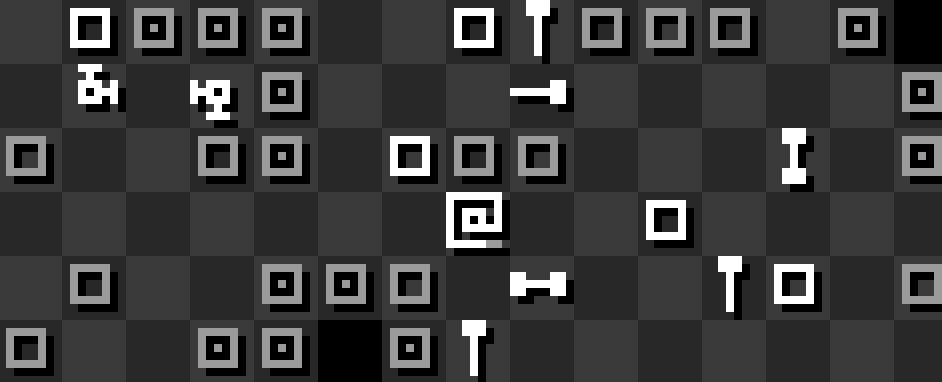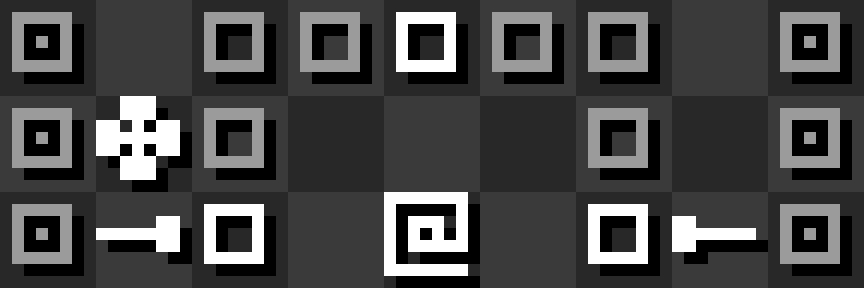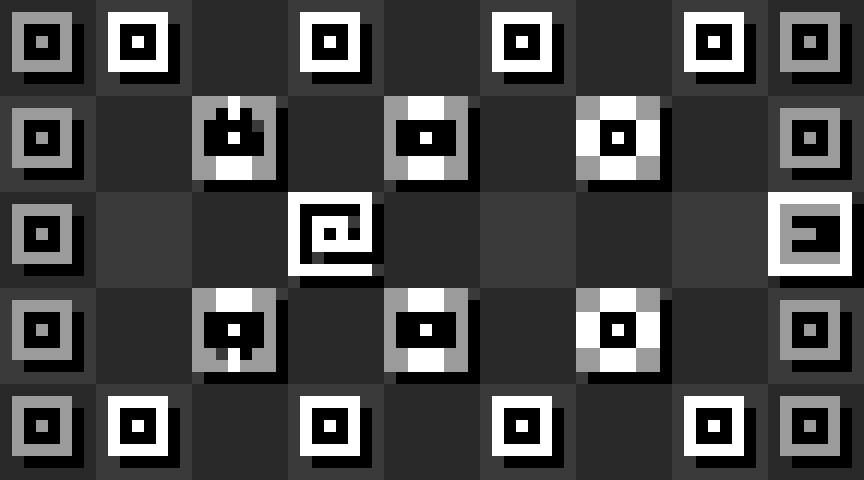TOM FRANCIS
REGRETS THIS ALREADY
Hello! I'm Tom. I'm a game designer, writer, and programmer on Gunpoint, Heat Signature, and Tactical Breach Wizards. Here's some more info on all the games I've worked on, here are the videos I make on YouTube, and here are two short stories I wrote for the Machine of Death collections.
Theme
By me. Uses Adaptive Images by Matt Wilcox.
Search

Ending, An Interesting Roguelite Puzzle Game With Extraordinary Sound Design
Found via Mike Bithell and Dan Cook, Ending is a puzzle game where you move around a tile-based dungeon, one square at a time, and enemies only move when you do. That’s normal for Rogue-like games, but here it’s also used as a puzzle: it’s all about trying to get enemies to walk into your attack range before you walk into theirs.
There are a bunch of cool things about it.
The Sounds Are Amazing
It’s just little text-like characters, but when you kill them or they kill you, the crunch is brutal. It sounds like they get shattered, little bone-like fragments clattering to the floor. The screen-shaking visual effects are part of it, but the sound especially is deeply satisfying.
The Puzzle Mode Is Extremely Neat
The first mode, the leftmost icon, is a series of hand-built puzzle levels that teach you how each enemy type works, then test your understanding with tricky situations that have a specific solution. It works really well because:
It teaches purely with play, always letting you learn the rules first-hand rather than telling you.
It does so with almost no cost for failure: you restart the room, but they’re small rooms and it’s quick to redo bits you already understand.
It teaches everything in two stages. The first puzzle featuring a new element will be tiny and simple: “Do you get it?” The next one will be more complicated, but only involve elements you’ve already been taught: “Do you really get it?”
You Don’t Have To Keep Playing The Puzzle Mode
I get puzzle fatigue. Even in a slick game like this, at some point I suddenly think “Alright, fuck this, I’m gonna do something else.” Not because I’ve been playing too long, but always because of a shift in the game’s balance between ‘How interesting this is to me’ and ‘How much work it is to play’.
For me, the “Fuck this” point happens much, much sooner if a puzzle game introduces:
– A sharp jump in difficulty or complexity
– A way to fail that requires redoing a lot of progress
– A challenge where I know the solution but it’s fiddly or time-consuming to execute
Ending is good at avoiding all that, so I lasted maybe 20 levels before I got slightly tired of learning about new enemy types and fiddling with very strict grid-movement solutions.
But it’s also got an interesting answer to this: a separate mode where you roam through huge, randomly generated dungeons made of these elements. The puzzles are much less difficult at first, but the randomness often leads to tricky situations, and just exploring it is refreshing.
You could see the first mode as the tutorial and this one as the main game, or the first mode as the main game and this as a sort of experimental aside. Either way, giving me the choice is what made me want to keep coming back to this.
It’s Available On Everything
You can play it in your browser for free, download an offline version for Windows, Mac or Linux, and buy it really cheap on both Android and iOS.


